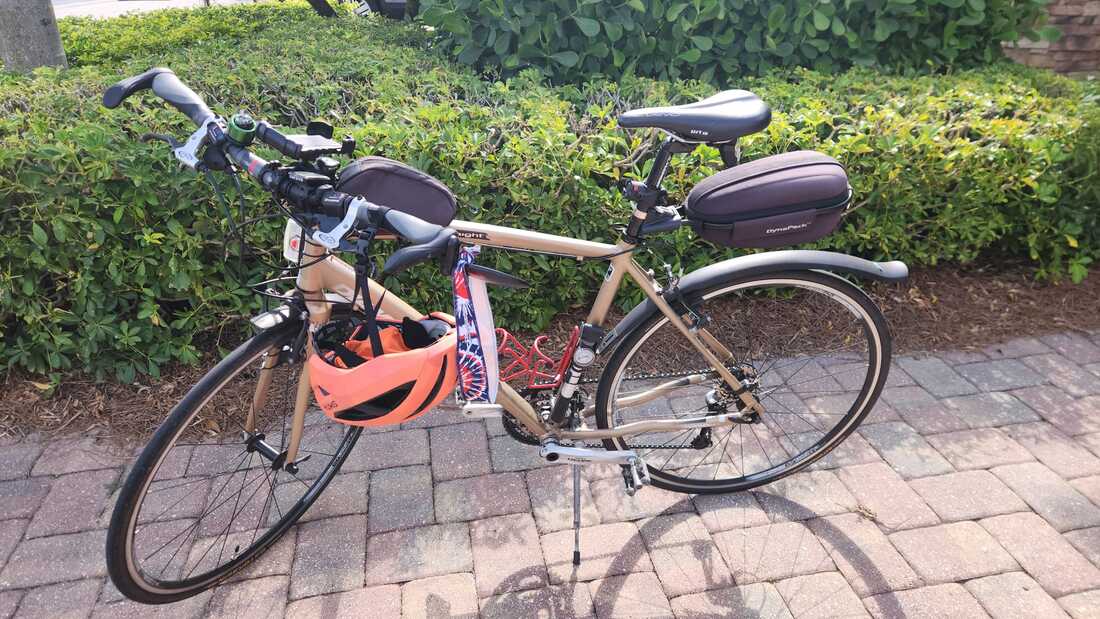Don't worry; getting physically ready for outdoor cycling in the spring is all about gradual preparation and reintroducing your body to the rhythm of cycling. Here’s how you can safely and effectively get back into the saddle after a winter break.
1. Start Slow and Build Gradually It can be tempting to jump right into long rides or high intensity cycling sessions, but your body needs time to adjust. Riding outside places different and often higher demands on your muscular and cardiovascular systems. Start with shorter, easy rides to get your legs back under you. Initially flatter rides are better. The Canadian Academy of Sport and Exercise Medicine recommends a 10% increase in workload per week. Workload consists of volume and intensity. So, if you are adding a hilly route, decrease your watts, speed or length of time accordingly 2. Stretching and Flexibility Cycling places a lot of demand on your legs, hips, and lower back, so it's essential to work on mobility before hitting the road. If you have used a stationary, or no bike, during the winter make sure that you have the spinal and hip mobility to rest comfortably in your fit. Consider adding dynamic stretching into your pre-ride routine. Leg swings, walking lunges, or even some gentle hip rotations can help loosen up your muscles before setting off. Long static stretching should wait until after the ride is over but can be easier to do when the muscles are warm. 3. Focus on Core Strength Cycling is not just about your legs; your core plays a crucial role in maintaining posture, balance, and control while on the bike. A strong core will make your rides more comfortable and reduce the risk of back or neck strain. If you’ve taken the winter off from cycling, you might find that your core has weakened, so it's time to include some core-strengthening exercises in your routine. Dead bugs and Mountain climbers are great basic core exercises for cyclists. Remember to keep the back and core stabilized and still during hip flexion. 4. Listen to Your Body As you transition back to cycling outdoors, be mindful of how your body is feeling. If you experience any pain or discomfort, don’t push through it. Take rest days when needed, and allow your body to recover between rides. Cycling should be fun, not a cause of injury or frustration. A general rule of thumb is that if pain is not resolving after 3 days you should seek advice from a physiotherapist, chiropractor or physician. 5. Gear Up for the Weather Spring can be unpredictable, with some days being warm and sunny while others bring cooler temperatures or rain. Be prepared by layering your clothing to stay comfortable. Opt for moisture-wicking base layers that will keep sweat off your skin, and bring a lightweight jacket in case the weather turns chilly or rainy. Additionally, don’t forget about safety gear. A well-fitting helmet, proper cycling gloves, and sunglasses for sun and wind protection are all essential parts of your outdoor cycling kit. 6. Tuning Up Your Bike It goes without saying that you bike might need a little attention as well. Transition time is a great time to check that everything is in working order. Make sure your tires are properly inflated, the chain is clean and lubricated, and the brakes are functioning smoothly. A bike that’s in good working condition will make your rides safer and more enjoyable. The roads are still dirty, and the weather is still cool, so take the time now to do the prep work. We will be back on the open roads in no time. Can’t wait to see you out there.
0 Comments
Your comment will be posted after it is approved.
Leave a Reply. |
Physio Sport Med
Serving all of Oakville in the Uptown / Dundas-Trafalgar Core. Archives
May 2025
Categories |
- Info
- Book Now
-
Team
-
How We Treat
- Sport Medicine Consultation
- Manual - Exercise Physio
- Sport Physiotherapy
- Tissue Injections
- Acupuncture
- Vestibular Physiotherapy
- Osteopathy
- Chiropractic Care
- Concussion Program
- Shockwave Therapy
- Female Pelvic Health
- Male Pelvic Health
- Registered Massage Therapy
- Nutrition Consultation
- On-Field Therapy Coverage
- Custom Orthotics
-
What We Treat
- Sports Injuries
- Low Back Pain
- Osteoarthritis
- Motor Vehicle Accident
- Sprains
- Muscle Strains
- Concussion
- Rotator Cuff
- Tendonitis
- Neck Pain and Headaches
- Hip Pain
- Shoulder Pain
- Elbow, Wrist and Hand Pain
- Foot and Ankle Pain
- Post Surgical Rehabilitation
- Gait and Balance Disorders
- Knee Injuries
- Pelvic Floor Conditions
- Blog


 RSS Feed
RSS Feed